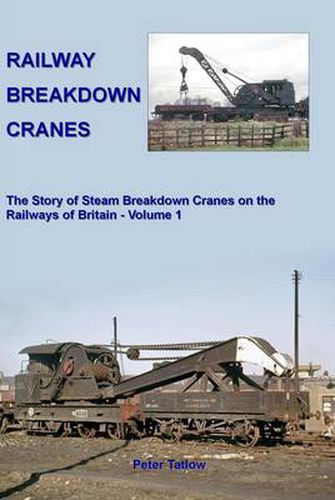Readings Newsletter
Become a Readings Member to make your shopping experience even easier.
Sign in or sign up for free!
You’re not far away from qualifying for FREE standard shipping within Australia
You’ve qualified for FREE standard shipping within Australia
The cart is loading…






Peter Tatlow provides readers with a concise and detailed history of railway breakdown cranes in Britain.
There are few railway subjects which have not been published in detail in recent years. One however, is that of Breakdown Cranes. Possibly this omission is in part due to the technical nature of the subject and as such the ideal person to compile such a work would be an engineer.
Such is the case now with this new work by respected railway author and former BR Civil Engineer, Peter Tatlow. In this two-volume history, Peter has taken the subject from its early days through the time of the short-jib cranes to more recent history and the introduction and use of the long-jib variant. Even so, many of the older types continued in use well into the late 20th century.
As well as descriptive and informative text, included are numerous photographs and scale plans. Illustrations of breakdown cranes in both static and working mode complete what will become the this standard work of reference on the subject.
$9.00 standard shipping within Australia
FREE standard shipping within Australia for orders over $100.00
Express & International shipping calculated at checkout
Peter Tatlow provides readers with a concise and detailed history of railway breakdown cranes in Britain.
There are few railway subjects which have not been published in detail in recent years. One however, is that of Breakdown Cranes. Possibly this omission is in part due to the technical nature of the subject and as such the ideal person to compile such a work would be an engineer.
Such is the case now with this new work by respected railway author and former BR Civil Engineer, Peter Tatlow. In this two-volume history, Peter has taken the subject from its early days through the time of the short-jib cranes to more recent history and the introduction and use of the long-jib variant. Even so, many of the older types continued in use well into the late 20th century.
As well as descriptive and informative text, included are numerous photographs and scale plans. Illustrations of breakdown cranes in both static and working mode complete what will become the this standard work of reference on the subject.